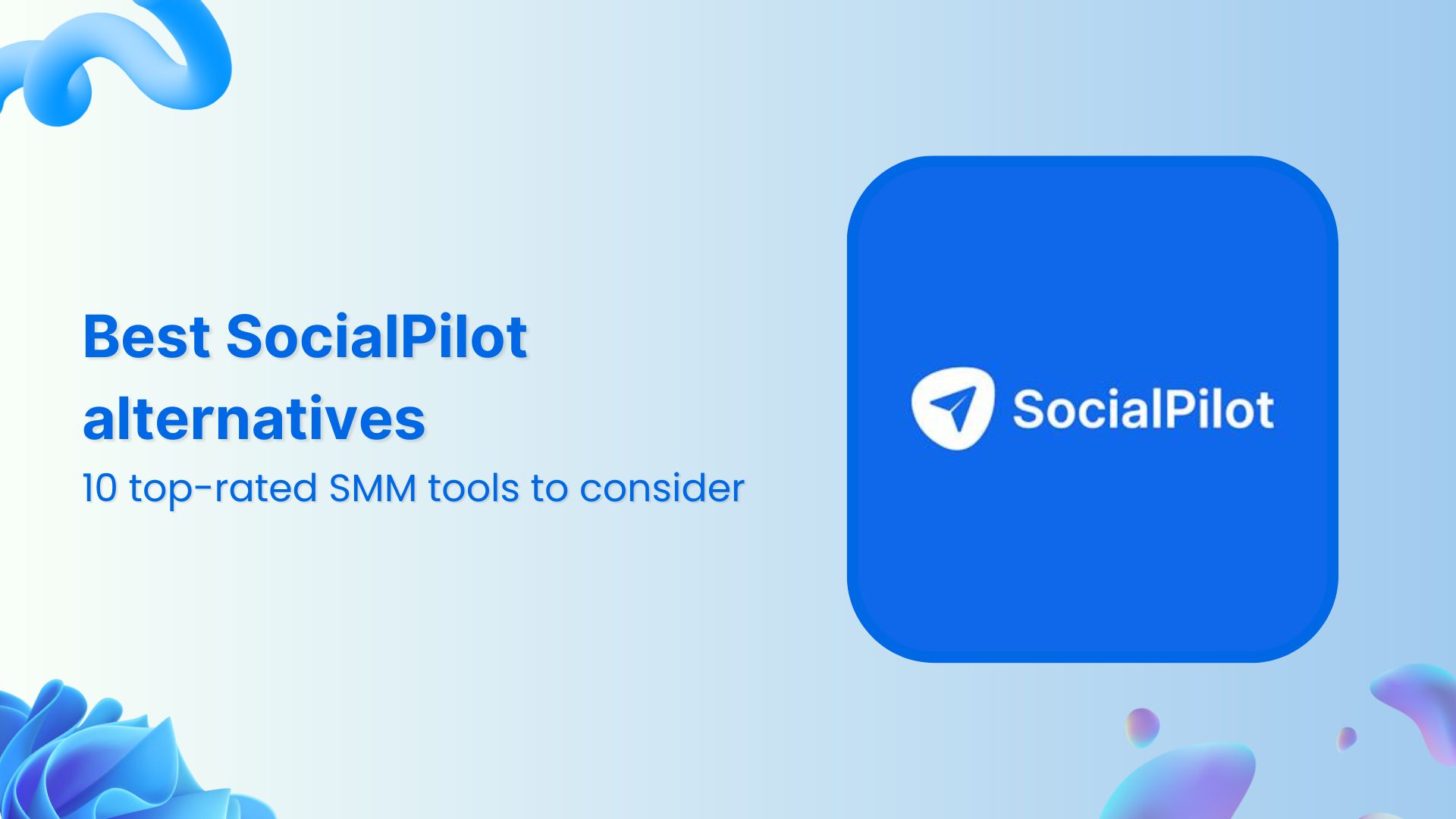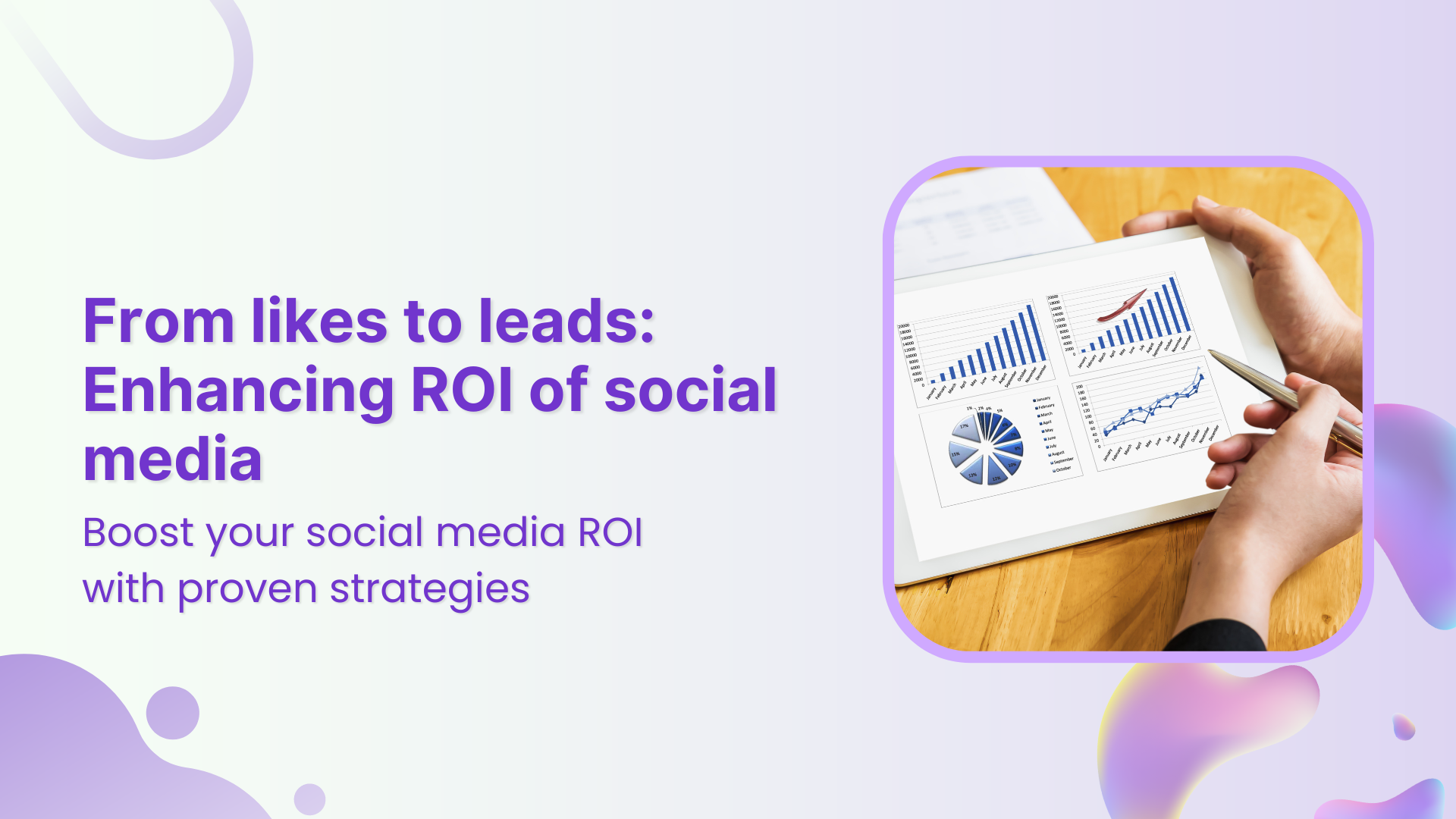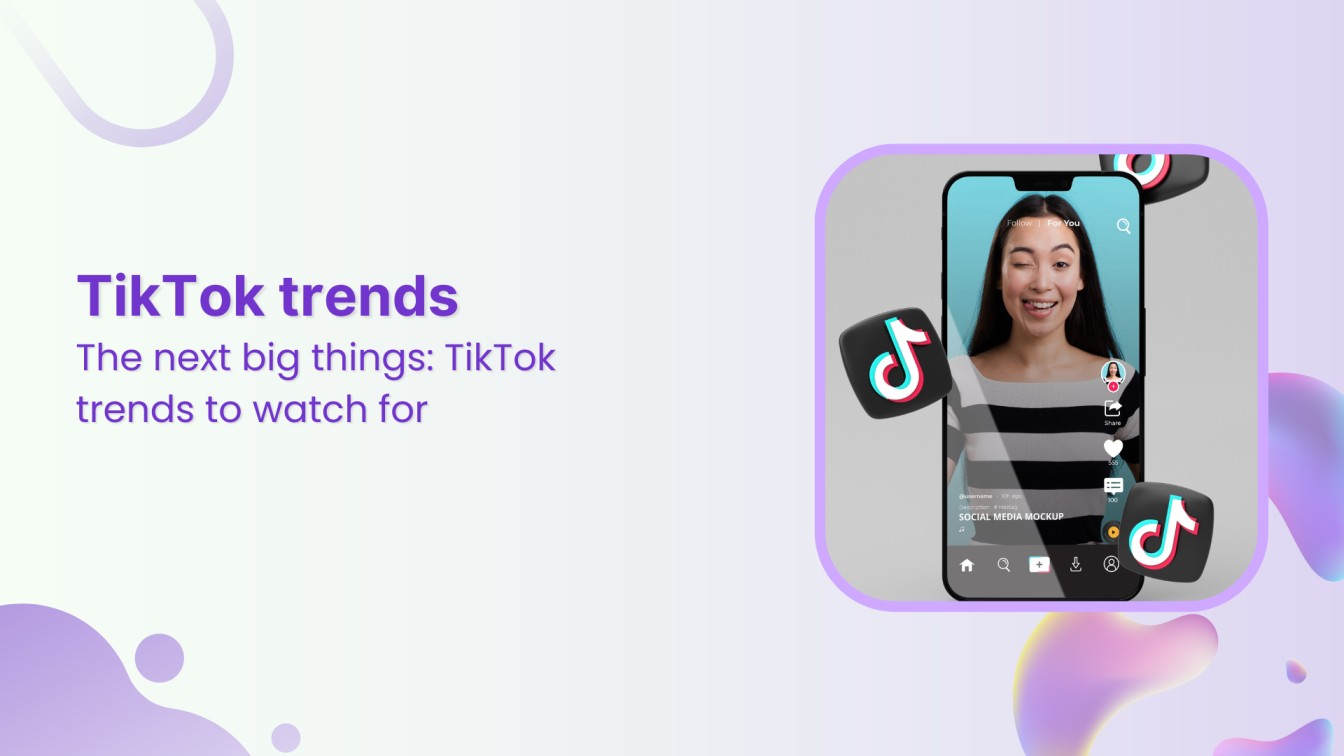Isn’t it fascinating that social media is changing how we sell online now? Certain third-party elements, such as payment gateways, landing pages, and email triggers, influence online selling, but it doesn’t devalue social media for selling. Interestingly, social media has become an avenue for finding customers and selling online.
You may be wrong if you think you haven’t had any experience showing the importance of social selling. Here, it becomes interesting: social selling isn’t just fabricated with Facebook and Twitter (X) ads. Instead, other dynamics come into play in social selling.
What is social selling?
What is the social selling index?
The SSI is calculated based on four key elements:
- Establishing a professional brand: This measures the completeness and effectiveness of a user’s LinkedIn profile, including factors such as profile completeness, content sharing, and engagement with the user’s profile.
- Finding the right people: This evaluates how well a user uses LinkedIn to identify and connect with potential prospects and decision-makers in their target audience.
- Engaging with insights: This assesses the user’s activity in sharing and engaging with content on LinkedIn, including posting updates, commenting on and sharing others’ content, and participating in group discussions.
- Building relationships: This looks at how effectively a user is using LinkedIn to nurture relationships with prospects and customers, including factors such as connecting with new contacts, messaging, and relationship-building activities.
The SSI provides a score ranging from 0 to 100, with higher scores indicating greater proficiency in social selling on LinkedIn. It serves as a benchmark for individuals and organizations to evaluate their social selling efforts and identify areas for improvement.
Why should you have a social selling strategy?
Having a social selling strategy is crucial for several reasons, such as:
- Increased reach and visibility: Social media platforms have billions of users worldwide, providing a vast pool of potential customers. A social selling strategy allows you to tap into this audience and expand your reach beyond traditional sales channels.
- Builds trust and credibility: Engaging with prospects on social media allows you to establish trust and credibility by providing valuable content, insights, and personalized interactions. This helps to position you as a trusted advisor rather than just a salesperson.
- Better targeting and personalization: Social media platforms offer robust targeting capabilities, allowing you to identify and connect with your ideal customers based on demographics, interests, and behavior. A social selling strategy enables you to tailor your messaging and content to resonate with specific audience segments, increasing the likelihood of conversion.
- Facilitates relationship building: Social media provides a platform for ongoing engagement and relationship building with prospects and customers. By consistently interacting with them, sharing relevant content, and providing support, you can nurture relationships over time, leading to stronger connections and increased loyalty.
Overall, having a social selling strategy allows you to leverage the power of social media to expand your reach, build relationships, and drive sales in a more targeted and personalized way. It helps you stay ahead of the competition and adapt to the changing landscape of modern sales and marketing.
Which networks should you use for social selling?
The best social media networks for social media sales depend on your target audience, industry, and objectives. However, some of the most effective platforms for social selling include:
- LinkedIn: LinkedIn is the leading professional networking platform and is highly effective for B2B (business-to-business) social selling. It offers robust tools for networking, lead generation, and content sharing, making it ideal for building relationships with decision-makers and influencers in your industry.
- Facebook: With over 2 billion active users, Facebook provides a vast audience for social selling. It offers features like Facebook Groups, Pages, and Ads that can be leveraged for lead generation, customer engagement, and sales conversions.
- Instagram: Instagram is particularly effective for businesses targeting younger demographics and those with visually appealing products or services. Its visual-centric nature makes it suitable for showcasing products, behind-the-scenes content, and user-generated content to engage with potential customers.
- X (Twitter): X is a fast-paced platform allowing real-time engagement and conversations. It’s useful for sharing industry news, participating in discussions, and providing customer support, all of which can contribute to building relationships and driving sales.
- Pinterest: Pinterest is a visual discovery platform where users can discover, save, and share ideas and inspiration. It’s effective for businesses in industries such as fashion, home decor, food, and crafts, as it allows for showcasing products and driving traffic to your website.
- YouTube: YouTube is the world’s second-largest search engine and is highly effective for video-based content marketing and social selling. Businesses can create educational videos, product demonstrations, and customer testimonials to engage with their audience and drive sales.
Ultimately, the best social media networks for social selling will depend on your specific business goals, target audience, and the type of content you produce. It’s essential to choose platforms where your audience is most active and to focus your efforts on building meaningful relationships and providing value to your followers.
It does not matter whether you’re a sales rep or just a budding entrepreneur; at the end of the day, we all have to sell something.
- Going for a job interview? You need to sell your experience, ability, and confidence
- Doing comedy skits? You need to sell your timing, expressions, and dialogue delivery.
- Becoming a driver? You need to sell your focus, consciousness, and expertise.
- Want to be a blogger? You need to sell your communication skills, knowledge, and experience.
You got my point!
Social media success is no easy game, especially if you sell a product or service. You must understand that you’re asking people for money, so make sure you create an offer they can’t refuse. This is exactly why being too pushy or salesy could backfire at any time.
Let’s explore ideas that could help sales representatives increase their sales by capitalizing on social media’s power.
Social selling best practices
Here are some of the best practices you need to follow to ace your social selling:
1. Optimize your social media profiles for professional branding
Ensure your social media profiles, especially on platforms like LinkedIn, are complete, professional, and reflect your brand identity. Use a professional photo, include relevant keywords in your headline and summary, and showcase your expertise through rich media content.
For example, ContentStudio’s Instagram profile features a clear and professional logo as a profile image and a concise yet informative bio highlighting its services and value proposition.
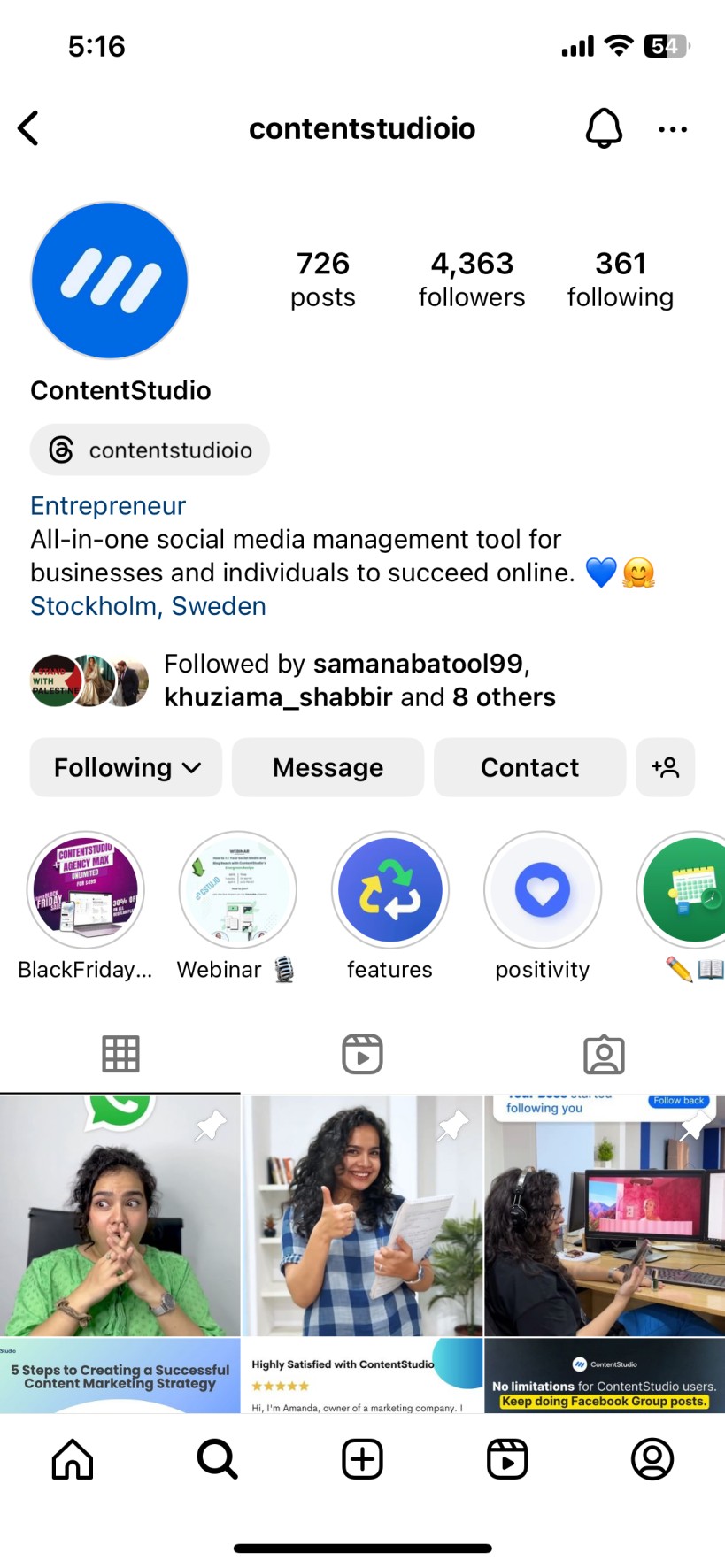


Some things to keep in mind while optimizing:
A vibrant display picture is essential for the audience to stop by and pay attention to your profile. A good picture humanizes your presence and shows your personality a little bit.
An attractive profile cover goes a long way. You can display your product, service, email address, web address, or any other information you want people to know. It’s real estate that the majority of people don’t use properly.
A briefly written bio tells your story. Don’t underestimate the power of words. Your bio can tell what you do, like, or anything else you’re all about. Most social media platforms have this feature, so you can use it more effectively.
Related Read: Short bio examples that will impress your audience
2. Spot the right audience
The easiest way to fail in social media is blindly hopping on all the social networks and trying to win. A sales representative is assigned a specific area to sell the products. If a company sends all the sales reps without assigning them the territories, it’ll be a mess. Similarly, if a salesperson tries to sell a product on the internet and tries every social media platform on the internet, it won’t work out. And the reason is simple: there are so many platforms out there, and moving pointlessly won’t help.
By “spotting the right audience,” one should magnify and closely observe the people. Everyone can’t be your prospective audience because people have different choices, needs, demands, thoughts, and personalities. It’s your job to figure out who your target audience is.
Read Up: How to leverage social media influencers to discover new audiences
- When we want to run a Facebook ad, Facebook asks us about the location, age, behaviors, and more details to understand the right audience.
- YouTube notices what we like on YouTube so that it can recommend similar content to watch.
- X understands who we’re following and shows us more similar people to follow.
The idea is simple: these platforms want to understand you so that they can better serve you and profit from your engagement and activities.
3. Choose the suitable social media platforms
If you want to start on the right foot, ensure you’re on the right social media platform. Many people don’t know which social media platform is good for their growth (here are some growth hacks, by the way). They join the bandwagon and opt for any social media network that seems popular. You need to put effort into figuring out the most suitable social media platforms for you.
For instance, if you’re a graphics designer, you better focus on Instagram, Behance, and X (Twitter) rather than LinkedIn, YouTube, and Facebook. There is nothing wrong with using the latter, but you’ll likely get more attention on Instagram, Behance, and Twitter because the audience would be more interested in seeing your work there.
P.S. Here are the 21 best online tools to create social media graphics.
You might not get this right in the beginning, but it doesn’t mean you can’t fix your social media strategy down the road. So don’t worry if you haven’t thought about this before. Instead, focus on the next 6 months and try to meet the right audience through suitable funnels.
4. Join groups and other forums
Participate in groups and forums on LinkedIn and other websites to keep up with business trends. Use insightful information to add to a conversation; members of the group will become irritated by unsolicited, sales-y remarks, just as they would be by a cold call or email. Either contribute something significant to the conversation or just watch from a distance.
Relationship development is, after all, about having conversations, not broadcasting. Comment on posts made by other individuals. Join a group and take an active part in it. Share other people’s material to promote unrelated initiatives. Put another way, if you are a good friend, your network should reciprocate.
Here’s an example:






5. Engage in the right communities
One of the easiest ways to spot the right audience is to engage in communities related to your industry. If you join Facebook or LinkedIn groups that aren’t from your industry, no matter how active you remain in those communities, it won’t help you grow or establish your presence. The reason is that your industry has nothing to do with them, and you won’t have much to talk about in the first place.
Rather, spend more time finding the right communities, whether Facebook groups, Twitter hashtags, or YouTube channels. Once you find those communities, start getting familiar with them, show up a few times a week, and be friendly with everyone.
So jumping into social media won’t help sales representatives unless they know where their prospective audience likes to hang out.
Also Read: How to build a Facebook community for Saas business?
6. Select the appropriate hashtags
Hashtags can be tricky for many, even if you’ve used social media for a while. Using the hashtags isn’t the only thing that matters. Meaning that if you’re using the wrong hashtags, it won’t even make an impact. So, selecting appropriate hashtags is an important job. You may come across a handful of hashtags from your industry, but it doesn’t mean you have to choose every one of them. There is a reason why every relevant hashtag shouldn’t be used, which you’ll learn later on in this article.
We also have a guide on hashtag marketing in 2024: Everything you need to know, but for now, let’s take a look at three essential elements of selecting the appropriate hashtags:
- They shouldn’t be very common because it would clearly backfire. Because of their popularity, tons of new content would be published on social media with those common hashtags, making it impossible to get attention. For example, try using hashtags like #dress, #clothing, #fashion, #gym, or #fitness. You’ll notice that your content will vanish within seconds because of the fresh content.
- Relevance is the key to maximizing the hashtags. If you know that the hashtags you’re using are quite familiar in the industry, then it’s all good, but if you’re trying something new, you’re on your own. For instance, #blogging is a very common hashtag among bloggers, but #bloggingtips is more relevant to the blogging content related to blogging tips.
- Use hashtag tools to find popular hashtags for your industry. Many tools exist that help you find your industry’s top-notch hashtags to utilize on social media. Try some of these free tools:
- TikTok hashtag generator
- Instagram hashtag generator
- Twitter (X) hashtag generator
- LinkedIn hashtag generator
7. Share authentic and relevant content
Distribute unique material tailored to your sector to increase interaction and reputation on social media. Have you encountered any intriguing articles on the industry your prospects are in? Distribute them! Have you encountered any interesting research that would make an excellent discussion starter? Spread the word! Remember to invite folks to participate in the comments section to strike up discussions.
For example, Adobe regularly shares informative blog posts, case studies, and industry reports on their social media channels, providing valuable insights and tips to their audience. They also engage with their followers by responding to comments and questions promptly.
8. Share success stories
One important type of social proof is testimonials. Studies reveal that more than 92% of business-to-business purchasers state they are inclined to purchase after pursuing a reliable assessment. Presenting success stories from previous clients enhances your reputation among prospective customers. Potential customers may be more likely to utilize your product if they identify with a testimonial you post on social media.



9. Subscribe to blogs and newsletters
How are you going to choose what topics to discuss with potential customers on social media? By going through related articles and comprehending the worries of possible clients. View the stuff that your buyers are sharing and follow their blogs. Next, post the articles on LinkedIn or your favorite social media platform that you believe your buyers will find especially intriguing. Also, subscribe to their newsletters that interest your buyers’ so you can have knowledge and updates regarding topics to post and discuss.
Here’s how ContentStudio provides an avenue when you go to their site with a CTA.
Also Read: 16 simple ways to make your blog post go viral
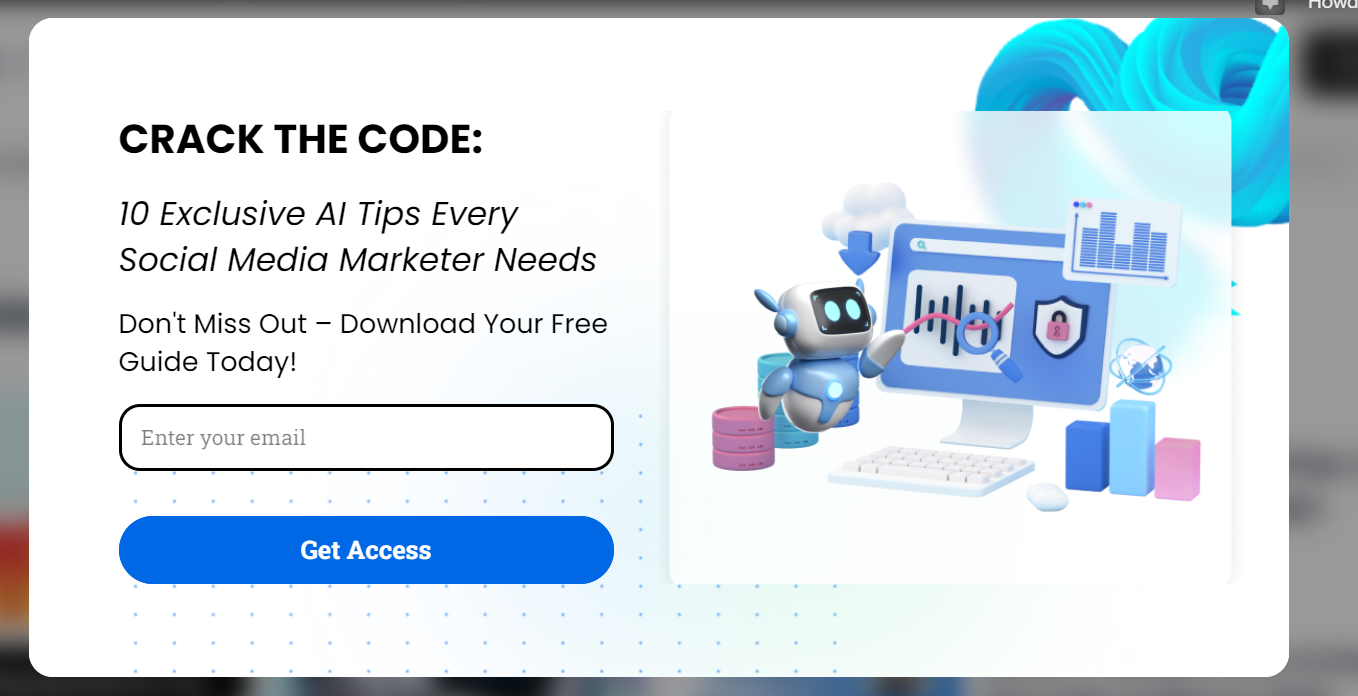


10. Stay consistent
Don’t count on quick fixes. Never lose up on developing relationships if you don’t get benefits immediately. Remain in contact even though some of your contacts might not be prepared to buy what you offer.
Make contact with fresh leads. Make contact with people you’ve previously interacted with but haven’t heard from in a long time. Sustain deep connections by expressing congratulations on their new roles or businesses or by reacting to the information they provide on social media. Have assistance or guidance available, even if it doesn’t immediately advance your merchandise.
Imagine you’re a sales representative trying to win new customers through social media and dominate your competition but appearing on Facebook, Twitter, or any chosen platform once a week. It won’t work out, for sure. Consistency means showing up multiple times a day and doing stuff that matters.
Gary Vaynerchuk is often asked how often we should post on social media. He often says to post as much as possible or thrice a day. However, he also tells people to create their own schedule (you can do that by using a content calendar) rather than looking at someone else’s posting routine.



Moreover, you’d also hear this advice from other social media influencers and online marketers: You should post on Facebook, Instagram, and Twitter multiple times a day—many people won’t see your post if you post once a day.
Of course, you’d panic for 10 minutes if you suddenly plan to post two to three times a day. The reason is that you haven’t done the homework for that. So, you should come up with a plan for batch creation. Once you have bulk-quality content, you’ll easily develop a posting schedule.



Then, you can start scheduling your social media posts using a social media management tool such as ContentStudio.
11. Create a content plan
If you’re looking at social media success as a sales representative, engagement on social media will help you get attention, as you’ve learned previously. One more thing would take your campaign to the next level: content that you’d put out. It doesn’t matter whether you create content or curate content.
What matters is that you have something to say on a consistent basis. Therefore, creating a content plan gives you an avenue to sort this out and decide what you want to create.
Many people put all their energy into creating fresh content but little effort into promoting it. I’d recommend engaging with the audience once you’ve started putting out and promoting content.
Have you ever heard of the 80/20 rule in content marketing?
According to many content marketing experts, one should put 20% of the effort into creating content and 80% into promoting that content. This is understandable in today’s social media world when organic reach is dying, and you have to rely on high engagement, multiple postings a day, and paid promotion to put your content in front of your followers.
12. Keep it original
Spend time personalizing your social selling messaging rather than composing one note and forwarding it to a thousand prospective customers. This implies that you could:
- Recognize your shared professional connections.
- Make reference to a post that you both responded to or shared.
- Emphasize a mutual interest or another similarity between you.
- Stated differently, be authentic. Establish a relationship by striking up a sincere discussion!
Although automated like and commenting options are available, they don’t help establish a rapport and have the potential to seriously harm your personal and professional brand. Nothing compares to dealing with a real person when it comes to selling.
13. Capitalizing your presence
You’re doing it wrong when you take the time to show up on social media but don’t occasionally highlight what you sell. While it’s true that you don’t have to be sales-focused on social media, otherwise, people will start unfollowing you.
Capitalizing on the presence means making the most of your situation. There is a fine line between being sales-oriented and capitalizing on the presence on social media. When you build your persona, you’ll be sharing relevant things, helping others, and being nice to everyone, but if you aren’t relevant to your product and industry, you’ll get carried away. And, if that happens, it might not help the cause.
Read Up: Social media positioning: A useful guide for brands
14. Build and track engagement
Likes, comments, shares, and high engagement are examples of social media engagement indicators. This information suggests that a piece of content genuinely impacts your audience. In order to keep providing your audience with the most pertinent content, keep an eye out for what performs best.
For instance, if you see that your audience is particularly interested in content about B2B sales tools, it’s a solid sign that this type of content receives the most likes, comments, or shares. The subject can then be discussed more frequently. You can use multiple tools like ContentStudio to track your engagement metrics.



The point is that if you don’t take a break and analyze your social media progress, you won’t improve. More importantly, you won’t be able to understand the situation. One of the benefits of measuring performance is that you can always alter your social media strategy.



What’s the conclusion?
The conclusion is that a sales representative can leverage social media at its best if the person knows the direction. We’ve tried to demonstrate a simple road map to help salespersons navigate social media and make the most of it.
You’d often find sales representatives randomly posting ads on Facebook in the comments sections and Facebook groups. Alternatively, they could research, find relevant groups, become a part of the community, and help others. They would have a better chance at some point to win clients. The reason is simple: when you become a part of the community and help others, you’re also taken care of at some point.
If you’re a salesperson, here’s a simple suggestion: don’t creep in and paste stuff into Facebook groups. Instead, try implementing the steps we laid out in this article. If you want social media success, you can earn it by doing the right thing. Social media selling is real—how you do it depends on you.
FAQs
The SSI is calculated based on four key elements:
- Establishing a professional brand
- Finding the right people
- Engaging with insights
- Building relationships
Nawal Mansoor
Meet Nawal, the savvy Marketing Specialist from ContentStudio, who keeps up with the latest trends and technologies ready to elevate your social media and content marketing game. With a knack for crafting engaging and accessible strategies, she empowers brands to shine in the digital spotlight. Beyond the digital landscape, Nawal is an adventurous soul always travel-ready!




